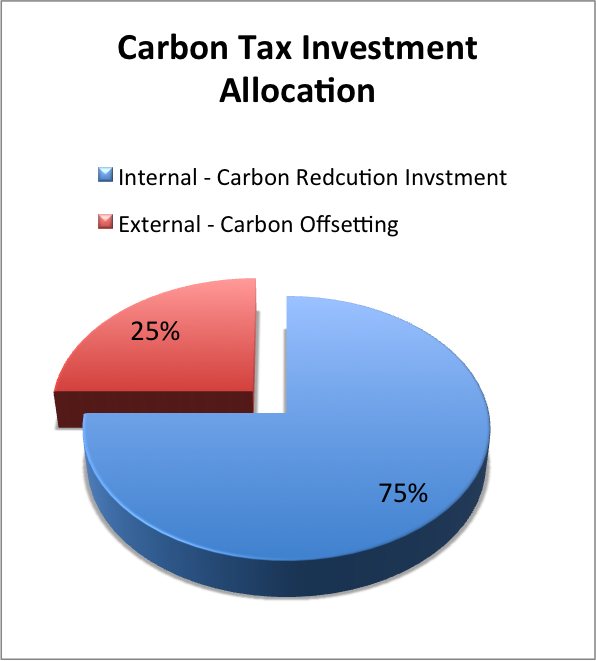Internal Carbon Pricing
helping to drive carbon reduction within your business
An increasing number of businesses are setting an Internal Carbon Price as part of their carbon management strategy
Advantages of setting an internal price on carbon
- Help drive down carbon emissions and meet business objectives
- Have a defined budget to invest in energy saving measures
- Encourage investments in activities that are likely to achieve the fastest payback
- Enables the business to become carbon neutral through internal and external investments
- Include the carbon cost in purchasing and investment decisions
- Be ready for regulatory carbon taxation
How does this get implemented?
Larger companies are effectively taxing individual departments or branches, based on their emissions. Following a carbon footprint assessment smaller businesses are ring fencing funds based on their emissions. This money can then be put aside for internal carbon reduction investments and supporting external projects too.

What level of carbon pricing should you set?
The UN Global Compact is encouraging organisations to set an internal price on carbon at 100 USD per tonne of CO2e by the year 2020.
Different companies may select a level that works for them. It is important that a level is set high enough to lead to meaningful changes. We suggest starting by setting a price of £20-25 per tonne of CO2, as this typically relates to 1-6% of the cost of causing emissions (as shown in the table below).
|
Electricity |
Natural Gas |
Car miles |
Flights |
|
| 1 tCO2 is equivalent to | 2400 kWh | 5500 kWh | 3300 miles | 5200 km |
| Cost to produce 1 tCO2 | £335 | £220 | £1485* | £400 |
| £20 carbon tax represents | 6% | 9% | 1% | 5% |
* based on 45p per mile
What should the Carbon Pricing funds be invested in?
The fund collected through this pricing mechanism can be reinvested across internal and external activities. We recommend a strategy is set to invest 75% on internal carbon reduction measures and 25% on external carbon offsetting activities.
Investments in internal carbon reduction activities should be made based on the level of carbon savings and the associated cost savings. Good carbon reduction investments usually pay for themselves and give a return on investment to the business within 3 years.
Once a carbon price has been set, the money allocated can be used to fund emission saving opportunities and to offset emissions. Carbon Offsetting is a vital tool for organisations looking to become carbon neutral. More information about carbon offsetting can be found here.
A growing number of business leaders recognise carbon pricing as the most efficient and cost effective means of reducing emissions, and they are publicly supporting it.
Microsoft placed a cost on carbon and report savings of $10million per year

Example Case Study
Company A is a large organisation, engaged largely in office admin activities, that uses 1,200,000kWh of electricity (approx. £120k spend per year) and 200,000kWh of gas annually (approx. £8k spend). In addition, they own 20 petrol company cars with a total annual mileage of 200,000 miles.
- Assuming a £25/tonne carbon price gives an annual carbon tax of £15,574. Using 18% of this tax was used to offset 100% of their total emissions and allow £12,700 to be spent on internal carbon
- Reduction investment, quick payback solutions were invested in e.g. LED lighting. With a payback within 2 years, making the organisation cash positive within a matter of years
- Carbon Offsetting return on investment is measured through access to tenders, brand enhancement and PR (use marketing return on investment techniques)
Carbon Footprint Ltd can help your business with:
- Setting a Carbon Pricing strategy
- Identifying cost effective investments to reduce emissions and save money
- Becoming carbon neutral through high quality carbon offset programmes around the world
Contact Us for support with Carbon Pricing and Carbon Management
